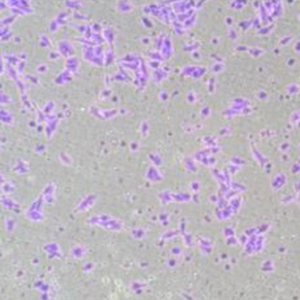 Smart Citations
Smart CitationsSee how this article has been cited at scite.ai
scite shows how a scientific paper has been cited by providing the context of the citation, a classification describing whether it supports, mentions, or contrasts the cited claim, and a label indicating in which section the citation was made.
Regulatory roles of ACSL5 in the anti-tumor function of palmitic acid (C16:0) via the ERK signaling pathway
Previous studies have highlighted the susceptibility of cancer to perturbations in lipid metabolism. In particular, C16:0 has emerged as a promising novel treatment for hepatocellular carcinoma. In our study, we investigated the levels of C16:0 in the serum of non-small lung cancer patients were significant downregulation compared to healthy individuals (n=10; p<0.05). Moreover, our in vitro experiments using A549 cells demonstrated that C16:0 effectively inhibited proliferation, apoptosis, migration, and invasion. Despite these promising results, its pathogenesis remains poorly understood. CCK-8 assay, annexin V-FITC/PI double staining assay, wound healing assay and transwell assay were performed to evaluate the effects of C16:0, on proliferation, apoptosis, migration and invasion of A549 cells. RNA sequencing was used to identify essential factors involved in C16:0-growth inhibition in lung cancer. Further, the expression levels of related gene and proteins were detected by quantitative RT-PCR and Western blotting. Mouse NSCLC subcutaneous xenograft tumor model was established, and gastric lavage was given with C16:0. Tumor volume assay and hematoxylin-eosin staining were used to detect tumor growth in vivo. Our analysis revealed a significant upregulation of ACSL5 and its associated proteins in C16:0-treated A549 cells compared to the control group both in vivo and in vitro. Moreover, the knockdown of ACSL5 reversed the anti-tumor effect, resulting in an increased rate of the malignant phenotype mentioned above. Additionally, the expression of phosphorylated ERK protein was significantly inhibited with increasing concentrations of C16:0 in A549 cells. These results reveal for the first time that C16:0, as a novel target, regulates ACLS5 through the ERK signaling pathway, to inhibit the proliferation and apoptosis and inhibits cell migration and invasion of NSCLC. These findings may lead to the development of a novel therapeutic approach for non-small lung cancer.
Edited by
this study was approved by the Animal Ethics Committee of Ningbo University (No. 2019-107)Supporting Agencies
Natural Science Foundation of Zhejiang Province, Medical and Health Research Project of Zhejiang Province, Ningbo Key Discipline Construction Project , Ningbo Natural Science FoundationHow to Cite

This work is licensed under a Creative Commons Attribution-NonCommercial 4.0 International License.
PAGEPress has chosen to apply the Creative Commons Attribution NonCommercial 4.0 International License (CC BY-NC 4.0) to all manuscripts to be published.








